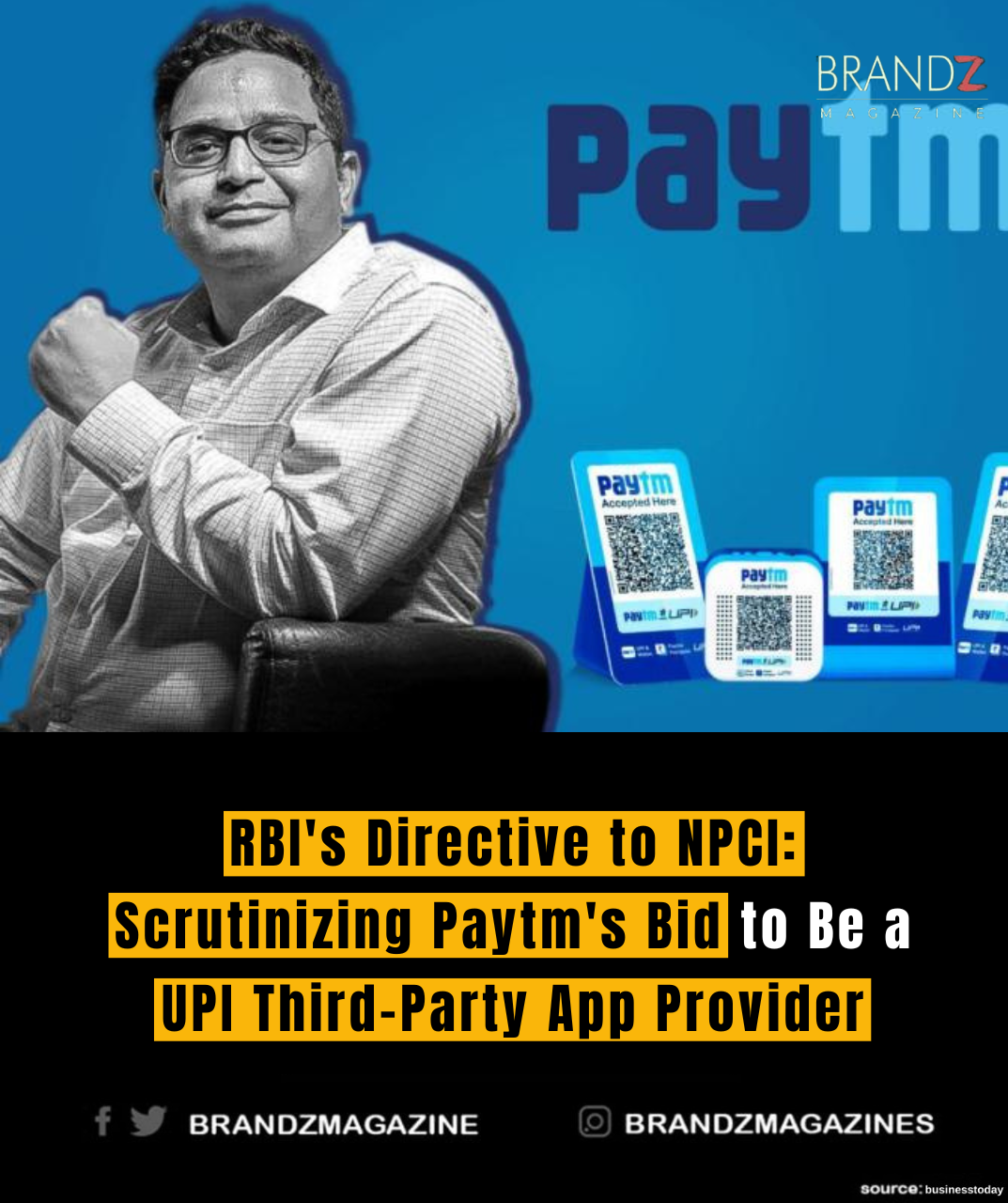
The Reserve Bank of India (RBI) has issued a directive to the National Payments Corporation of India (NPCI) to thoroughly examine Paytm’s request to become a third-party app provider for the Unified Payments Interface (UPI). This development has stirred significant interest in the fintech industry and raised questions about the potential implications for the digital payments ecosystem.
Paytm, one of India’s leading digital payment platforms, has long been seeking to expand its presence in the UPI space. Becoming a third-party app provider for UPI would allow Paytm to offer UPI-based payment services directly through its platform, enhancing convenience for its users and potentially increasing its market share in the fiercely competitive digital payments landscape.
The RBI’s directive to NPCI underscores the regulator’s commitment to ensuring the safety, security, and stability of the payments ecosystem. As the custodian of India’s payment infrastructure, NPCI plays a crucial role in facilitating seamless and efficient transactions across various payment channels, including UPI.
The scrutiny of Paytm’s request reflects the regulatory scrutiny surrounding third-party app providers in the UPI ecosystem. With the increasing popularity of UPI-based payments, regulators are keen to ensure that all participants adhere to strict compliance standards and maintain the integrity of the system.
Paytm’s bid to become a third-party app provider for UPI comes at a time when the digital payments landscape in India is witnessing rapid evolution and intense competition. With players like Google Pay, PhonePe, and Amazon Pay already dominating the UPI space, Paytm faces stiff competition as it seeks to carve out a niche for itself.
If Paytm’s request is approved, it could potentially disrupt the existing dynamics of the UPI ecosystem. As one of the largest players in the digital payments market, Paytm’s entry as a third-party app provider could lead to increased competition, innovation, and choice for consumers.
However, there are also concerns about the potential risks and challenges associated with allowing a dominant player like Paytm to become a third-party app provider for UPI. Critics argue that granting Paytm access to the UPI infrastructure could give it undue advantage over smaller players and lead to monopolistic practices in the market.
Moreover, there are regulatory considerations that NPCI and RBI must carefully evaluate before approving Paytm’s request. Ensuring compliance with data protection regulations, cybersecurity standards, and anti-money laundering laws will be paramount to safeguarding the integrity and security of the UPI ecosystem.
In conclusion, RBI’s directive to NPCI to examine Paytm’s request to become a third-party app provider for UPI signals a significant development in India’s digital payments landscape. While Paytm’s entry could bring about increased competition and innovation, it also poses challenges and regulatory considerations that must be carefully addressed. As the fintech industry awaits NPCI’s decision, the outcome of this deliberation will have far-reaching implications for the future of digital payments in India.

